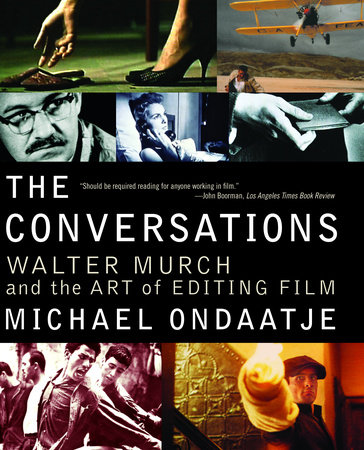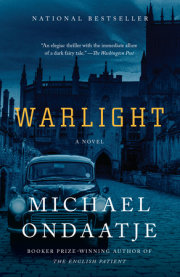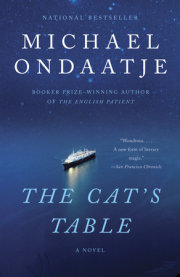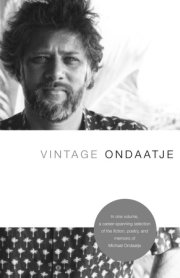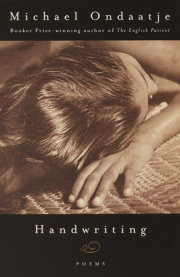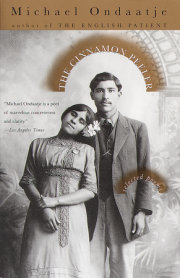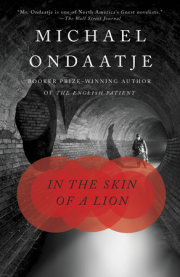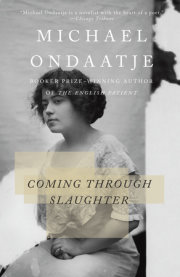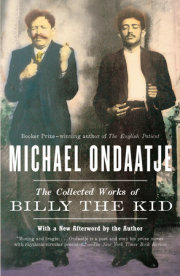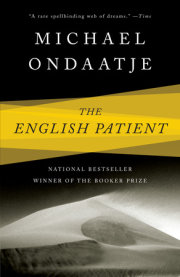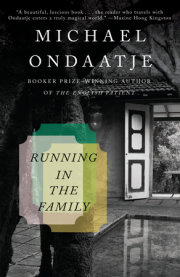Chapter 1
FIRST CONVERSATION SAN FRANCISCO
In the spring of 2000,Walter Murch, at the suggestion of Francis Ford Coppola, began to re-edit
Apocalypse Now, a film he had worked on back in 1977—1979 both as sound designer and as one of the four picture editors. Twenty-two years later, all the takes and discards and “lost” scenes and sound elements (carefully preserved in climate-controlled limestone caves in Pennsylvania) were brought out of vaults to be reconsidered.
Apocalypse Now is a part of the American subconscious. And in some way this was the problem.Having dinner with the novelist Alfredo Véa in San Francisco, after spending my first day with Walter at Zoetrope, I mentioned what was happening with the re-editing of
Apocalypse Now, and Véa immediately launched into Marlon Brando’s monologue about the snail on a razor blade. This was followed, during dinner, by Véa’s precise imitation of Dennis Hopper’s whine: “What are they gonna say about him? What are they gonna say? That he was a kind man? That he was a
wise man? . . .” For Véa, who fought in Vietnam,
Apocalypse Now was
the movie about the war. It was the work of art that caught it for him, that gave him a mythological structure he could refer to, that showed him what he had gone through and would later write about himself in books such as
Gods Go Begging. So those working on the new
Apocalypse Now were aware that there would be problems connected with their dismantling and restructuring a “classic.” It was now public property.
“It
has become part of the culture,” said Murch. “And that’s not a one-way street, as you know from your writing. As much as a work affects the culture, the culture mysteriously affects the work.
Apocalypse Now in the year 2000 is a very different thing from the physically exact-same
Apocalypse Now in the second before it was released in 1979.”
The idea for a new version grew out of Coppola’s desire to produce a DVD of
Apocalypse Now with a number of major scenes that were–for reasons of length–eliminated from the 1979 version. Also, 2000 was the twenty-fifth anniversary of the fall of Saigon, so it seemed appropriate to re-evaluate editorial decisions that had originally been made while the war was still a vividly painful bruise on the nation’s psyche. But rather than have the restored scenes appear in isolation, appended in their own chapter, why not integrate them into the body of the film as originally intended? The problem was that the editing and sound work on the excised material had never been finished, and one scene in particular was eliminated before it was completely shot. Fortunately, the negative and original sound for all this material were perfectly preserved in original laboratory rolls, and could be retrieved, two decades later, as if the film had been shot a few weeks earlier.
And so Walter Murch was now working in San Francisco, in the old Zoetrope building. Mostly he had to collect and reconsider the material for three large sequences that were cut from the film in 1978–a medevac scene involving Playboy Bunnies; further scenes with Brando in the Kurtz compound; and a ghostly, funereal dinner and love scene at a French rubber plantation. In Eleanor Coppola’s book about the making of the film, she writes of this scene:
I heard the French plantation scene is definitely out of the picture. It never seemed to fit right. I am one of the people who liked it, but it did stop the flow of Willard’s journey. Today I was thinking about all the days of agony Francis went through during the shooting of that scene. The hundreds of thousands of dollars spent on the set and the cast flown in from France. Now the whole thing will end up as a roll of celluloid in a vault somewhere.
“The film acquired a body in the absence of these limbs,” said Murch, speaking of those missing scenes. “Now we’re trying to sew them back on, and who knows? Whether the body will accept or reject or find the addition difficult is something we’re struggling with right now. I have a sense of it and it’s actually been going quite well, but until we finally step back and look at the work as a whole, we won’t be able to say whether this will be artistically successful or whether it’s simply going to be a curiosity piece for those who were already interested in the film.”
The three scenes are the major additions in the new version of the film, but there are many other small changes that Murch and his colleagues were making– additions that give a different tone to much of the film. There is more humour, and with the addition of bridges between episodes that had been cut because of time concerns the film has also become less fragmentary. Those previously missing elements, said Murch,“were casualties of the hallmark struggle in every editing room: How short can the film be and still work? Even though Francis had final cut, he was as acutely aware as anybody of the strictures of getting a film into the theatres as lean as it could be.With the new version, that particular drive–for compression above all–is not as compelling.”
Much of our first conversation took place during four days in July 2000, while Walter worked on the new version of the film. Our talk during those days dealt with the “new” scenes but also with the differences and similarities between writing and editing, music, and his feelings about other editors. We talked as Walter worked on the Avid in his editing room at Zoetrope and later continued over lunch at a Chinese restaurant on Columbus Avenue. The new version of
Apocalypse Now Redux would not open in theatres for almost a year, and Walter was still uncertain about several changes.
We began, however, by talking about the early days and how he became involved with the world of sound and eventually film.
HUMBLE SOUNDS
O: You’re an editor who works in sound as well as picture. You created “soundscapes” for films such as
Apocalypse Now. When did you first become interested in this landscape of sound?
M: It was with me from as early as I can remember.Maybe I heard things differently because my ears stuck out, or maybe because my ears stuck out people thought I would hear things differently, so I obliged them. It’s hard to say. What’s true is that if words failed me I would switch to sound effects, I would imitate the sound of something if I didn’t know its name. Back then there was an animated cartoon character, a boy named Gerald McBoing-Boing, who spoke in sound effects instead of words, and he was able to communicate with his parents this way. That was my nickname:Walter McBoing-Boing.
Around that time the tape recorder was becoming available as a consumer item. The father of a friend of mine bought one, so I wound up going over to his house endlessly to play with it.And that passion, which was a kind of delirious drunkenness with what the tape recorder could do, completely possessed me. I eventually convinced my parents that it would be a good idea if our family had one, because we could then record music off the radio and wouldn’t have to buy records. In fact, I rarely used it for that, but I would hold the microphone out the window, recording sounds of New York. I would construct little arrangements of metal, and tape the microphone to them, striking and rubbing the metal in different places. It was fascinating.
And then I discovered the concept of physically editing tape–that you could rearrange it by cutting out sections and putting those sections in a different order.You could record two things at different times and juxtapose them, getting rid of the middle, or you could turn the tape upside down and play it backwards, or flip it over and play it back muffled, or any combination of these things.
O: So did European movements such as
musique concrète in the fifties inspire you?
M: Definitely. I came home from school one day and turned on the classical radio station,WQXR, in the middle of a program. Sounds were coming out of the speaker that raised the hair on the back of my neck. I turned the tape recorder on and listened for the next twenty minutes or so, riveted by what I was hearing. It turned out to be a record by Pierre Schaeffer and Pierre Henry–two of the early practitioners of
musique concrète. I could hear a real similarity with what I had been doing–taking ordinary sounds and arranging them rhythmically, creating a kind of music on tape. In France at that time, people would go to concerts and a big speaker would be wheeled out onstage. Somebody would come out and turn the tape recorder on with a flourish, and the audience would sit there patiently listening to this composition being played back. Then at the end they’d all applaud. This was the future!
O: You were how old when this hit you?
M: Ten or eleven, something like that. It was intoxicating to realize that somebody else was doing the same things I was.Up to that point I’d thought that this was just my strange little hobby. But here was validation. There were adults in the world who took it seriously. I felt like Robinson Crusoe finding Friday’s footprint in the sand.
O:And these were essentially documentary recordings with an artistic structure?
M: It was an early, technically primitive form of sampling. What’s strange– only in retrospect–is that I didn’t follow through with it. By the time I was fifteen or sixteen, I had relegated all of this passion to my pre-adolescence–I thought I now had to get serious. Maybe I was going to be an architect. Or an oceanographer. Was I going to be . . . what? It was only in my early twenties that I discovered those early interests all came together in film.
O: Did someone like John Cage interest you,were you interested in what he was doing?
M: My father was a painter and tangentially involved in Cage’s world. We would go to some of his concerts. I appreciated them, but I was moved more by the
idea of what he was doing–that by taking humble sounds out of their normal context you could make people pay attention and discover the musical elements in them. It was very close to what my father was doing in his paintings: taking discarded objects and arranging them in ways to make you see them with new eyes.
O:Was the interest in editing film something that existed at the same time? Or did it come much later?
M: When I was a student at Johns Hopkins, a group of us made some short silent films, and I discovered then that editing images had emotionally the same impact for me as editing sound. It was intoxicating. You write eloquently about that in
Anil’s Ghost, about the state of mind of a doctor in the middle of surgery: You get to a place where time is not an issue at all, and you’re oddly at the centre of things but also you are not.You’re the person doing it, yet the feeling is that you’re
not the origin of it, that somehow “it” is happening around you, that you are being used by this thing to help bring it into the world. I felt that way when I was eleven, playing with my tapes. I didn’t know how to interpret it then, but I discovered, when I was twenty, that editing images gave me the same feeling. Then when I got to the University of Southern California as a graduate student, both of those things–sound and picture–came together.
As I’ve gone through life, I’ve found that your chances for happiness are increased if you wind up doing something that is a reflection of what you loved most when you were somewhere between nine and eleven years old.
O: Yes–something that had and still has the feeling of a hobby, a curiosity.
M: At that age, you know enough of the world to have opinions about things, but you’re not old enough yet to be overly influenced by the crowd or by what other people are doing or what you think you “should” be doing. If what you do later on ties into that reservoir in some way, then you are nurturing some essential part of yourself. It’s certainly been true in my case. I’m doing now, at fifty-eight, almost exactly what most excited me when I was eleven.
But I went through a whole late-adolescent phase when I thought: Splicing sounds together can’t be a real occupation, maybe I should be a geologist or teach art history.
O: Did you think of going into the sciences at all?
M: No. Although I was interested in them–and interested in math–as revelations of hidden patterns. What you do as an editor is search for patterns, at both the superficial and ever deeper levels–as deep as you can go.
The fact is that there is always much more film shot than can ever be included in the finished product: on average, about twenty-five times too much–which would mean fifty hours of material for a two-hour film. Sometimes the ratio is as high as a hundred to one, as it was on
Apocalypse Now. And films are almost always shot out of sequence, which means that on the same day the crew could find themselves filming scenes from the beginning, the end, and the middle of the script. This is done to make the schedule more efficient, but it means that someone–the editor–must take on the responsibility for finding the best material out of that great surplus and putting it in the correct order. Although there is a universe of complexity hidden in those short words “best” and “correct.”
When it works, film editing–which could just as easily be called “film construction”– identifies and exploits underlying patterns of sound and image that are not obvious on the surface. Putting a film together is, in an ideal sense, the orchestrating of all those patterns, just like different musical themes are orchestrated in a symphony. It is all pretty mysterious. It’s right at the heart of the whole exercise.
HIGH SCHOOL CONFIDENTIAL
O: How did you go from being that boy in New York to someone working in film in California?
M: I was studying art history and Romance languages in Italy and Paris, in ’63—’64, the height of the French New Wave. I came back to the States buzzing with the idea of film, and then I realized that there were actually schools where you could study it, which I found incredible, delicious, almost absurd. I applied to a number of them, and miraculously won a scholarship to the graduate program at USC. Strangely enough, I only discovered that films needed sound when I got there: it was a revelation to me that the sound had to be recorded separately from the image and “cooked”–edited and mixed–before it was finished. But I immediately saw the connection with what I had been doing twelve years earlier, and that was exciting.
Copyright © 2002 by Michael Ondaatje. All rights reserved. No part of this excerpt may be reproduced or reprinted without permission in writing from the publisher.

